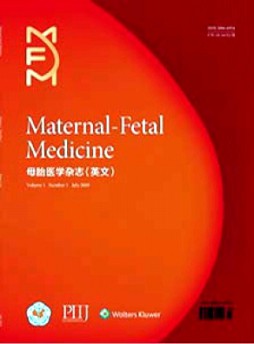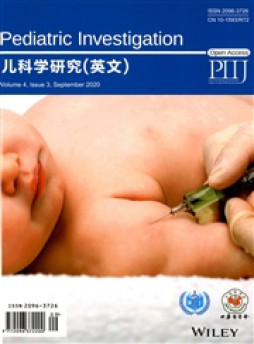英文毕业论文范文
前言:我们精心挑选了数篇优质英文毕业论文文章,供您阅读参考。期待这些文章能为您带来启发,助您在写作的道路上更上一层楼。

第1篇
摘要:毕业论文是学生积数年习得的知识和学术理念的精华体现,但如今其现状不尽如人意。本文从毕业论文的现状入手,通过调查,分析现状成因,进而反思英文写作课教学并提出其定位。
毕业论文和学位论文通常是有一定长度并有文献资料佐证的学术研究论文,专门对科学领域中的某些问题或现象进行探讨研究,具有科学性和创见性。毕业论文的完成是学生在掌握本专业要求的全部知识、理论和技能的基础上进行综合运用,独立地、创造性地解决理论和实际问题的一项活动,是学生从事独立科研工作的起点,也是展示自己专业水平和科研能力的一次机会。更重要的是,毕业论文写作的优劣是决定学生毕业时可否被授予学士学位的重要依据。因此,毕业论文的写作应当受到高度重视。然而,目前的本科毕业论文质量令人担忧,曾有文章比之为“鸡肋”,意为“弃之可惜,食之无味”。就英语专业毕业论文而言,情况则更应引起重视。
一、论文现状根据教学进度的要求,英语专业的学生在第八学期开学伊始就要准备论文开题报告,从而进入实质性的论文写作过程。下面是在各个环节出现的问题。
1.选题草率,研究方向不确定。学生在选题时不够慎重,没有经过严肃的思考,有的同学仅凭一时兴起就定下题目,如《论佛教在中国的发展》。且不说这个题目大小,其内容本身就已超出专业范围,用英文撰写对本科生也实属力所难逮。还有的同学选题为‘OnReading’,研究方向不确定,泛泛而谈,不知侧重在哪里。虽然从表面上看,有些情况属于个案,但事实上,近几年,题目难以确定的现象越来越多,有的已经导师认可的题目,学生在进行下一步工作之前又有较大改变,甚至改变研究方向。
2.资料收集仓促,时而迷失方向。论文中表达的观点和论点一般是以资料研究为基础的,如果仅凭一两本或几篇文章,就想从中得出令人信服的结论是不可能的,即使得出结论,也没有多大说服力,因为资料太少,不足为证。然而,学生收集资料缺乏系统性,觉得不够用了则难以继续,转而换题,资料跟着题目变,仓促之间,迷失方向不知所措。
3.论文撰写问题重重。撰写论文要对收集到的资料进行阅读、做笔记、研究和整理之后,用自己的语言将其串联起来,说明论点、摆出论据、完成论证。如果只是把收集到的资料堆积在一起,东一段、西一段地拼凑下来,不能称其为论文。而大部分学生恰恰是以堆积为主,自己陈述为辅,论点跟着论据走,缺乏一致性,连贯性和逻辑性。另外,从论文整体的文字上看,资料部分用词专业、准确,句子相对复杂,而学生自己的陈述则语法错误频频出现,句子简单并口语化。
二、现状的成因
1.形势与应试的导向。近几年的扩招使学生数量有所上升,而教师的数量不但基本上没有上升,还有不少人投入国内外的进修学习而不能担任课程。由于课程负担过重,使教师不堪重负而有意无意地忽视了写作课实践环节以及批阅后的反馈。全国统一安排的英语专业四、八级考试合格证已成为评定英语专业水平的重要砝码,在社会和校方的大力关注下,学生认识到四级考试决定毕业证,八级考试关系到找工作,写作课教师也希望学生在写作项目考试中得高分。于是,大部分时间都围绕四、八级考试进行。学生熟悉了框架形式、套路,只注意与过级考试相关的写作形式与技巧,不善于观察生活和知识积累,因此也就谈不上运用所学的知识表达思想、分析问题和解决问题了。
2.写作教材的适用性。我国大学英语专业的写作教学一直缺少一套较为完整,由浅及深,循序渐进,适合现实各个阶段教学需要的教材。基础英语写作教材的范例虽多,但语言过于浅显,有些内容较贴近生活,但实用性和趣味性还有待提高;课后练习多为围绕四、八级考试出题,学生“见多了”正式考题,对此类写作练习,缺乏动力,且练习都未附参考答案,使师生课后没有参阅的标准;毕业论文一章,在二年级开始讲授,引不起学生的共鸣,一来是学生忙于考级,论文不是重点,二来时间尚早,缺乏一个过渡期,无法形成理性认识。
3.学生基本功较差又缺乏实践。学生习惯于让老师灌输词汇句型,不愿意动脑筋积极思考,写出来的东西用词不贴切,语法不规范,行文不顺畅,缺乏逻辑性、无条理。众所周知,写作不仅在于语言文字的组织,更多的功夫在于知识积累和文化素质,这方面的提高对于学生更为重要。然而,待学生忙完了四、八级考试转入论文写作的时候,才发现自己没有做好这方面的准备,无论是题目、提纲还是摘要、引言、参考文献,从形式到内容脑子里一片空白。虽说在之前的写作课上,这些内容都讲过,但当时不是学习重点,而且没有亲自实践过程,学生不知所措,无从下手。
三、英文写作课的定位
1.专时专用,突出目标。将四、八级考试及毕业论文写作分阶段进行,形成层次。在基础英语写作阶段,集中实现两个公认的目标:提高英语写作能力和顺利通过四、八级考试。将教材中传统的写作技巧中的精华部分及增加的课外内容边讲授边加入写作实践,从而更加强调写作的动态过程和学习者创造性的发挥。毕业论文指导要作为一门课程开设,专门讲授学术论文的研究方法,这样不仅为学生的四年学业成就提供展示的机会,而且为将来的学习和工作打下良好的基础。
2.注重实际,精讲多练。有效克服教材的不足,从实际出发,为我所用,可适当放弃一些高深的章节,并增加一些循序渐进的内容,保证稳步提高。针对学生存在的诸多问题,在讲授词汇、语法、句法方面多做有益的练习,尽量找生动、学生易犯的大量的中式英语的例子,使学生在谈笑间能将其错误牢记在心。而大量的练习能给学生留下长久的印象。这样既提高了四、八级成绩,又有助于学生写作能力的提高,更重要的是提升了跨文化交际意识。
3.发动学生,互帮互进。由于教师的精力有限,可适时适量地发动学生互评作业,学生自己能够解决的问题自己解决。同学间同级互评能帮助学生增强读者意识,降低写作焦虑,弥补自己写作中的不足。首先,互评可增加其词汇量,正反两方面的评价有益于所有学生作文水平的提高。其次,学生能够通过讨论互评首先成为一个头脑敏锐、丰富的读者、听众,然后成为一个思路清晰、能写出好文章的作者。
这样,教师不再是作为唯一的“读者”去评判学生的作品。全班同学在教师的帮助下,发现问题并能表达出问题的所在。最终学生对评判自己的作品的内容的表达方面也更加敏锐,并能更好地修正自己的作品,学生会很快地从评判活动中看到益处,也会把大家对自己作品的评价作为提高文章水平的重要的参考资料。其实,这不仅解决了日常教学中的问题,而且培养了学生严谨治学的良好习惯。总而言之,对英语专业毕业论文反映出来的问题要认真研究,其中英文写作课的教学任务极为关键,通过调查研究与实践相结合,不断探索,希望能够提高学生的论文本论文由无忧论文由写作能力。
参考文献:
[1]程杰.合理利用文献[J].广东工业大学学报,2004,06.第四卷增刊:148
第2篇
在毕业论文中有着起到非常重要作用的就是毕业论文致谢了,那么你们知道毕业论文致谢英文应该怎么撰写吗?下面是学术参考网小编为朋友们搜集整理的毕业论文致谢英文,希望可以帮到你~
Acknowledgements
MydeepestgratitudegoesfirstandforemosttoProfessoraaa,mysupervisor,forherconstantencouragementandguidance.Shehaswalkedmethroughallthestagesofthewritingofthisthesis.Withoutherconsistentandilluminatinginstruction,thisthesiscouldnothavereacheditspresentform.
Second,IwouldliketoexpressmyheartfeltgratitudetoProfessoraaa,wholedmeintotheworldoftranslation.IamalsogreatlyindebtedtotheprofessorsandteachersattheDepartmentofEnglish:Professordddd,Professorssss,whohaveinstructedandhelpedmealotinthepasttwoyears.
Lastmythankswouldgotomybelovedfamilyfortheirlovingconsiderationsandgreatconfidenceinmeallthroughtheseyears.Ialsoowemysinceregratitudetomyfriendsandmyfellowclassmateswhogavemetheirhelpandtimeinlisteningtomeandhelpingmeworkoutmyproblemsduringthedifficultcourseofthethesis
第3篇
英语专业毕业论文致谢词
Acknowledgements
MydeepestgratitudegoesfirstandforemosttoProfessoraaa,mysupervisor,forherconstantencouragementandguidance.Shehaswalkedmethroughallthestagesofthewritingofthisthesis.Withoutherconsistentandilluminatinginstruction,thisthesiscouldnothavereacheditspresentform.
免责声明
本站为第三方开放式学习交流平台,所有内容均为用户上传,仅供参考,不代表本站立场。若内容不实请联系在线客服删除,服务时间:8:00~21:00。



